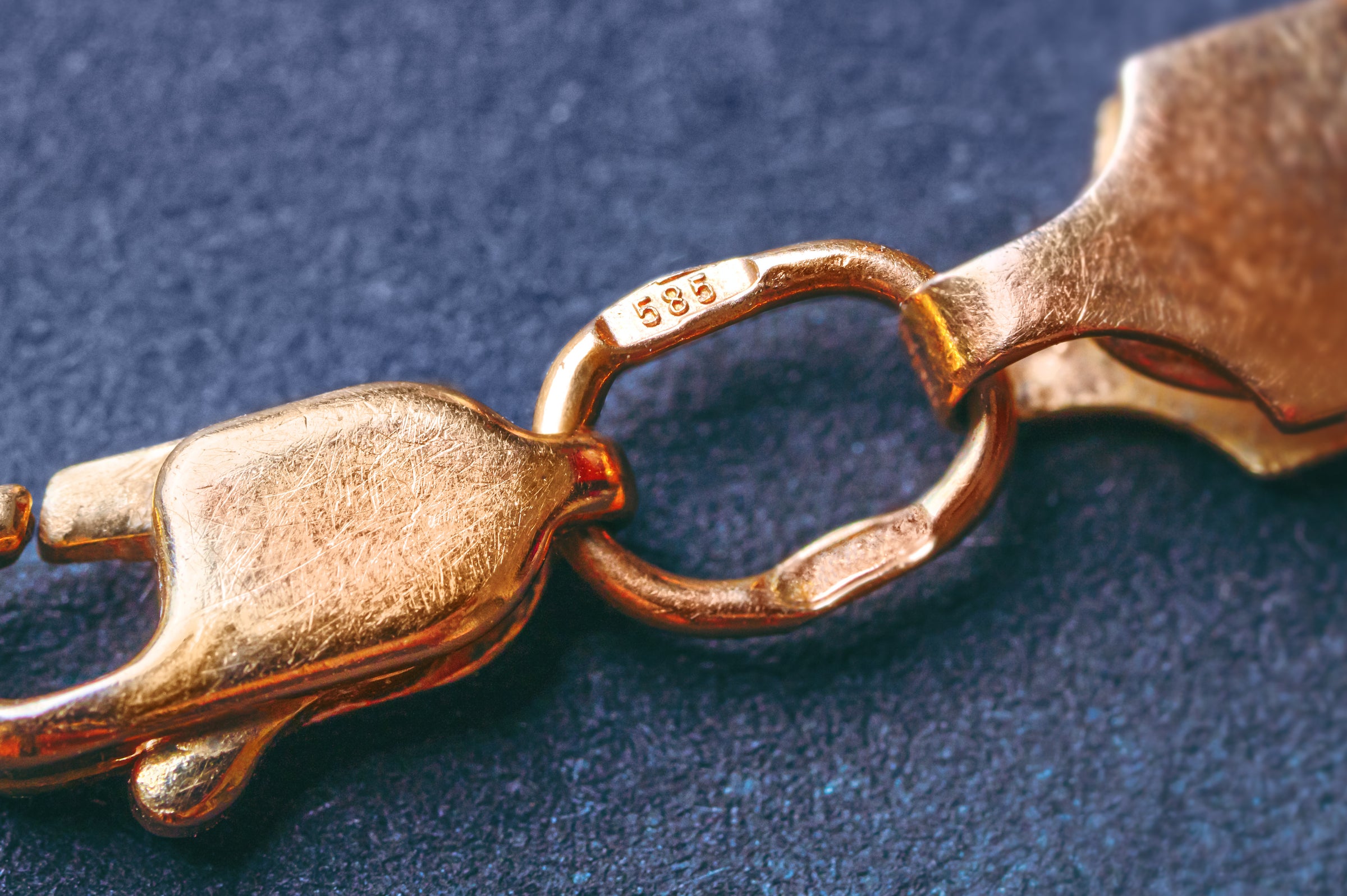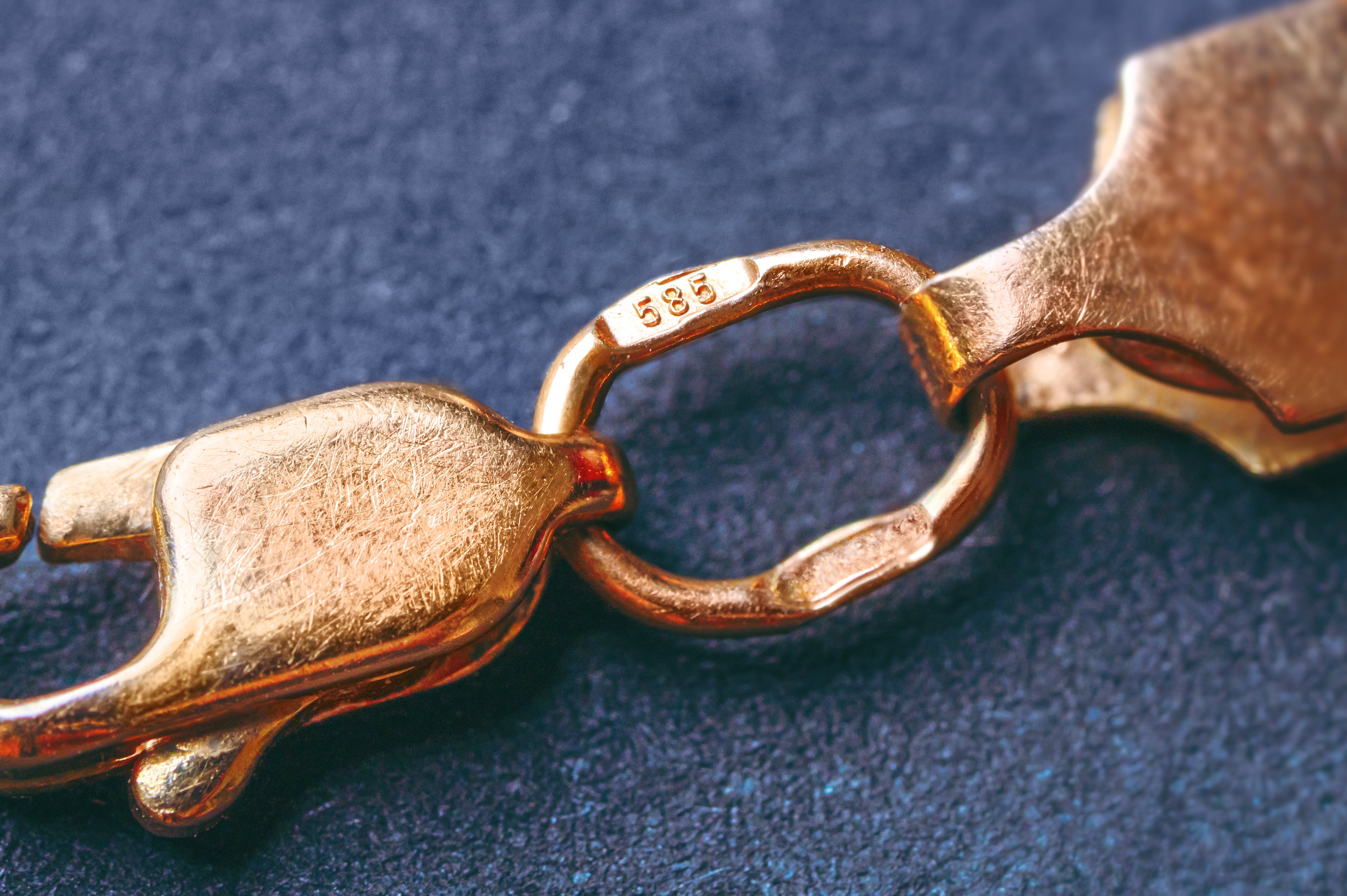If you’ve ever looked closely at your jewelry, you may have seen small numbers stamped into the metal. Each number has a specific meaning and helps identify the type of material in the piece. Testing the metal is the only way to know for sure, but the numbers usually give a safe answer.
Silver Purity Stamps
What Does 925 Mean on Jewelry?
The number “925” on jewelry means that the metal is sterling silver. The number refers to the percentage of pure sterling silver, which is 92.5%. The remaining 7.5% can be composed of various metals to increase the durability or strength of the piece. Sterling silver is known for its high durability and low tarnish resistance, making it an ideal choice for everyday wear.
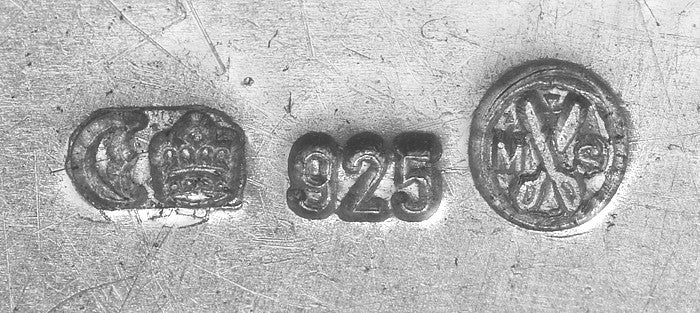
Masa, CC BY-SA 3.0, via Wikimedia Commons
Not all 925 sterling silver is the same. While jewelers often mix silver with copper, some may use nickel, which can cause skin reactions for some people. Most reputable jewelers avoid nickel and label their pieces as “nickel-free.” Plating sterling silver with rhodium also helps reduce allergies and adds shine.
Some other stamps on silver you may see include:
- 800 - European silver or continental silver (80% purity) - This is not common today, but was once used for flatware and coins due to its strength.
- 900 - Coin silver (90% purity) - Jewelers used this for flatware and hollowware.
- 935 and 960 - Introduced in the 1990s as a modern alternative to sterling silver and sometimes referred to as Germanium Silver. Known for high tarnish resistance and durability. 935 is more common than 960.
- 950 - Britannia silver (95%) - Medium tarnish resistance and medium durability. Good for detailed designs.
- 999 - Fine silver (99.9% purity) - High tarnish resistance but soft, so best for delicate pieces.
Why Does My Gold Jewelry Have a Silver Stamp on It?
If you have gold-colored jewelry with a “925” stamp, you likely own a vermeil piece. Jewelers make vermeil by coating sterling silver with a thin layer of 22-karat gold for a bright shine.
Gold Purity Stamps
The gold used in jewelry will always be mixed or alloyed with other metals because pure gold is soft and easily scratched or dented. An alloy is a combination of two or more metallic elements, primarily used to enhance the durability or strength of a material.
In the case of gold, the type of metal it is mixed with can also alter the color. When combined with copper, the result is rose gold. Depending on the carat, mixing gold with silver, palladium, and platinum can achieve a white gold effect.
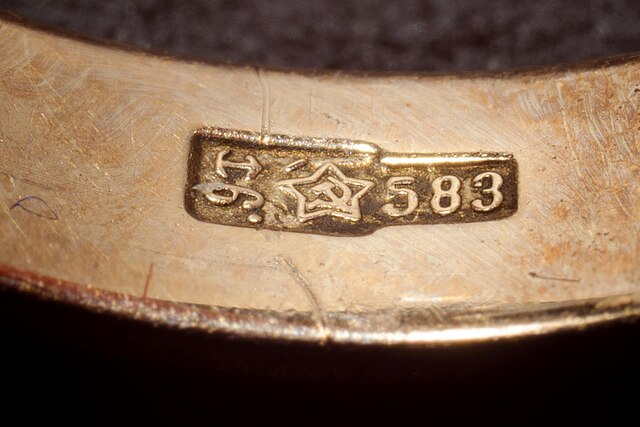
Star61, CC BY-SA 4.0, via Wikimedia Commons
The karat number for gold purity is a percentage. Since 24 karats is the absolute purest form of gold, this is the denominator in the equation. For example, 14 karat gold is 14 parts gold out of 24, or 14 divided by 24, which equals .585 or 58.5%. As you’ll read below, the stamp 585 represents 14-karat gold.
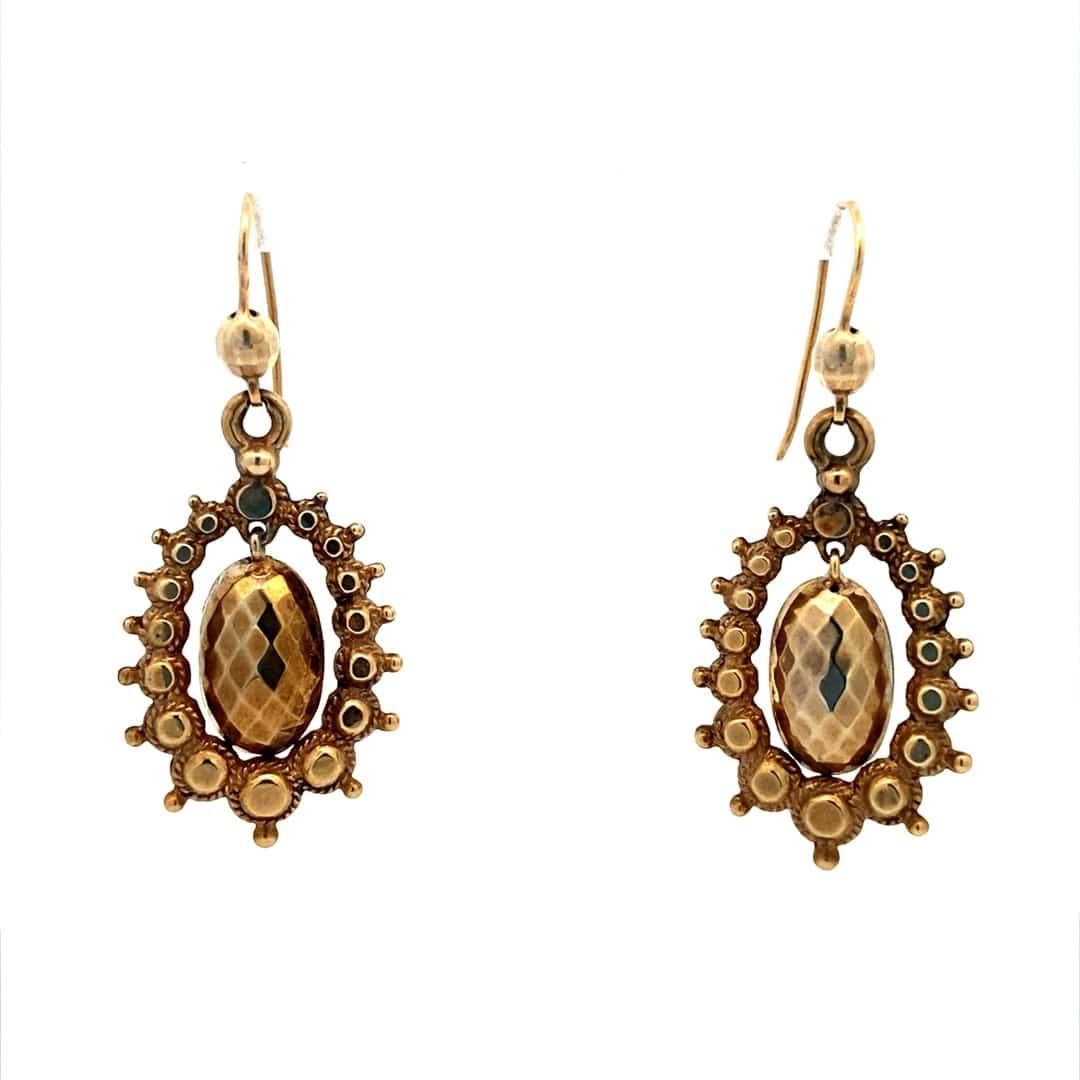
9 Karat Gold Antique Victorian Earrings
What Does 375 Mean on Jewelry?
The stamp “750” means the piece contains 75% gold and 25% other metals. This is also called 18-karat gold and may appear as “18K.” Both white and rose gold are available at this purity. You will find 18-karat gold in the U.S., but it is more common in Europe, especially Italy.
What Does 585 Mean on Jewelry?
The stamp “585” means the piece contains 58.5% gold and 41.5% other metals. This is also called 14-karat gold and may appear as “14K.” Both white and rose gold are available at this purity. Jewelers in the United States sell more 14-karat gold than any other type.
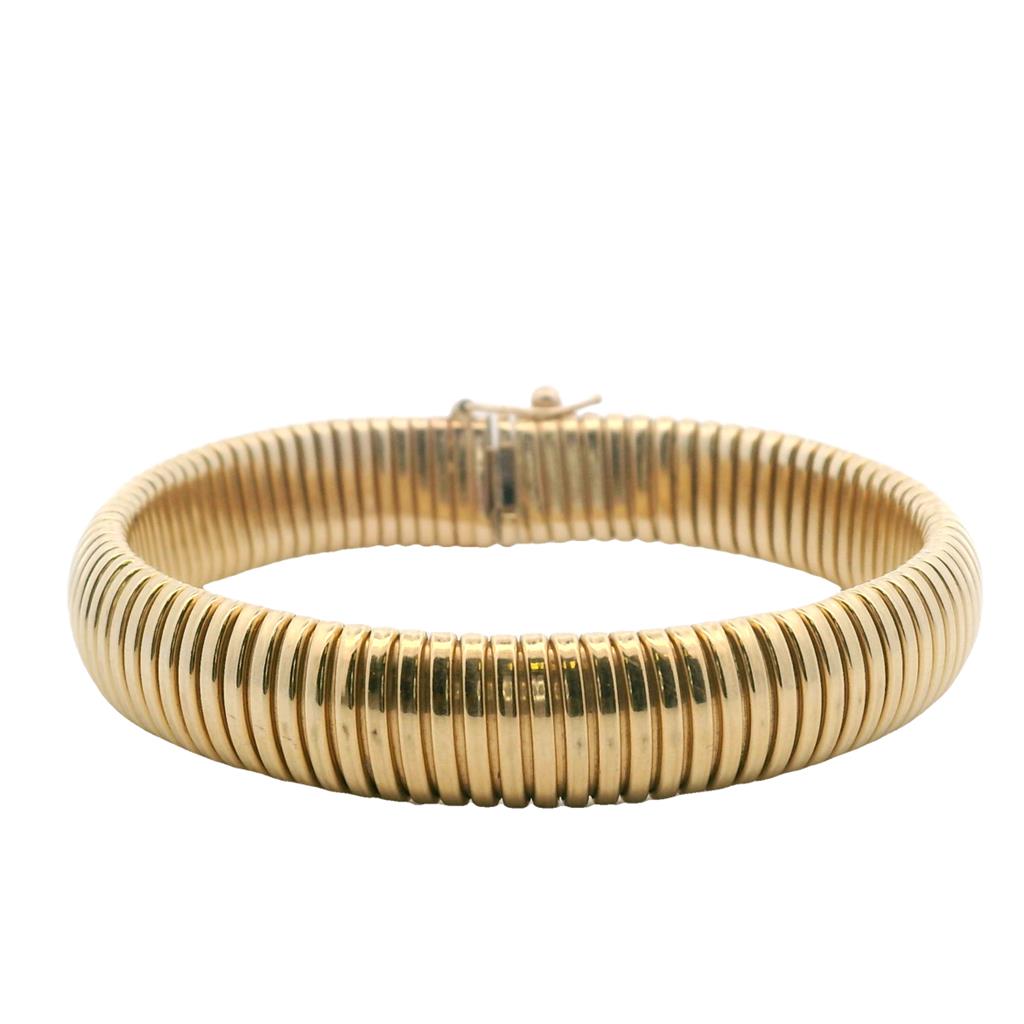
14 Karat Gold Retro Bvlgari Tubogas Bracelet
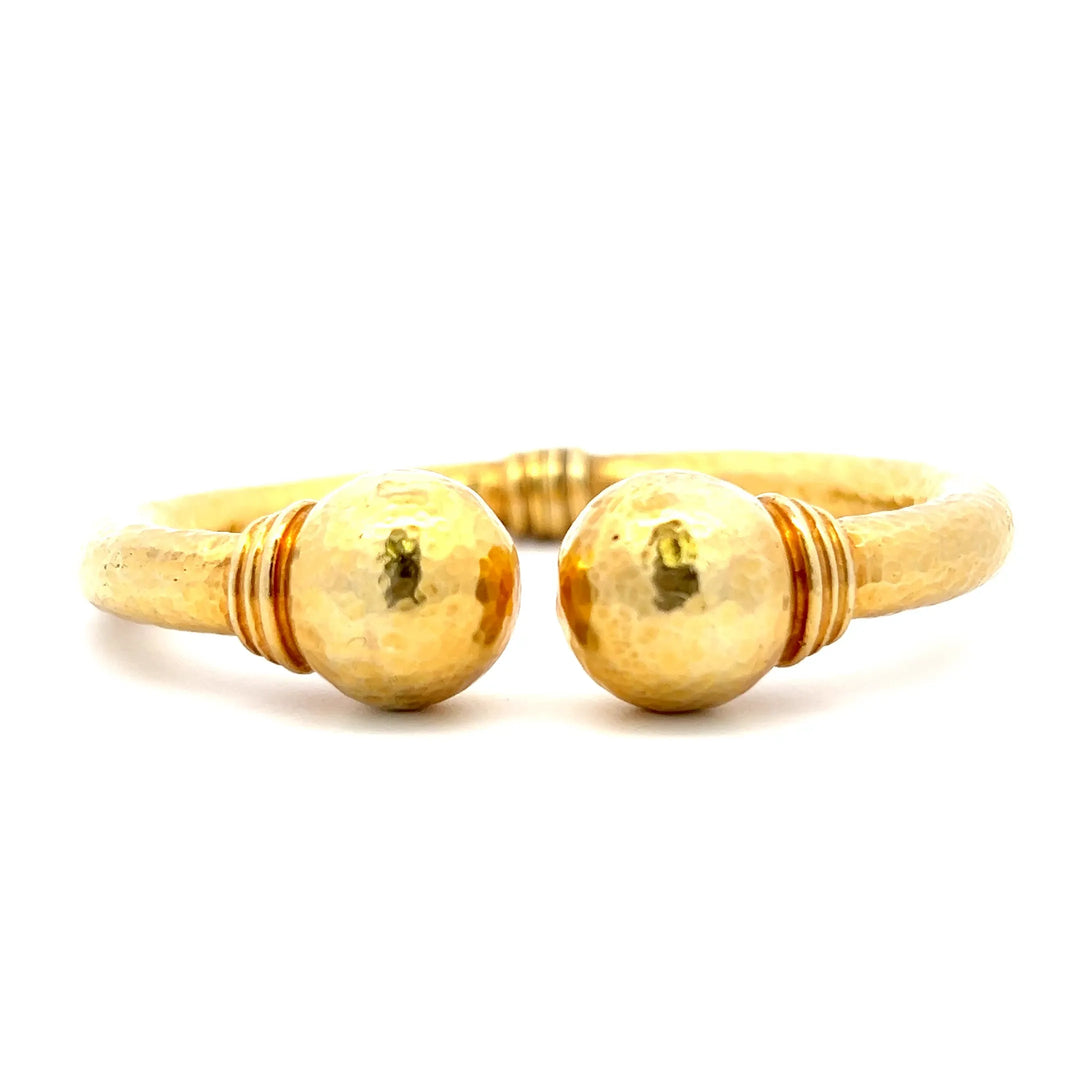
18 Karat Gold Cuff Bracelet with Hammered Texture
What Does 750 Mean on Jewelry?
The stamp “750” means the piece contains 75% gold and 25% other metals. This is also called 18-karat gold and may appear as “18K.” Both white and rose gold are available at this purity. You will find 18-karat gold in the U.S., but it is more common in Europe, especially Italy.
What Does 916 Mean on Jewelry?
The stamp “916” means the piece contains 91.6% gold and 8.4% other metals. This is also called 22-karat gold and may appear as “22K.” At this purity, the gold has a rich yellow color that stands out from lower karats.
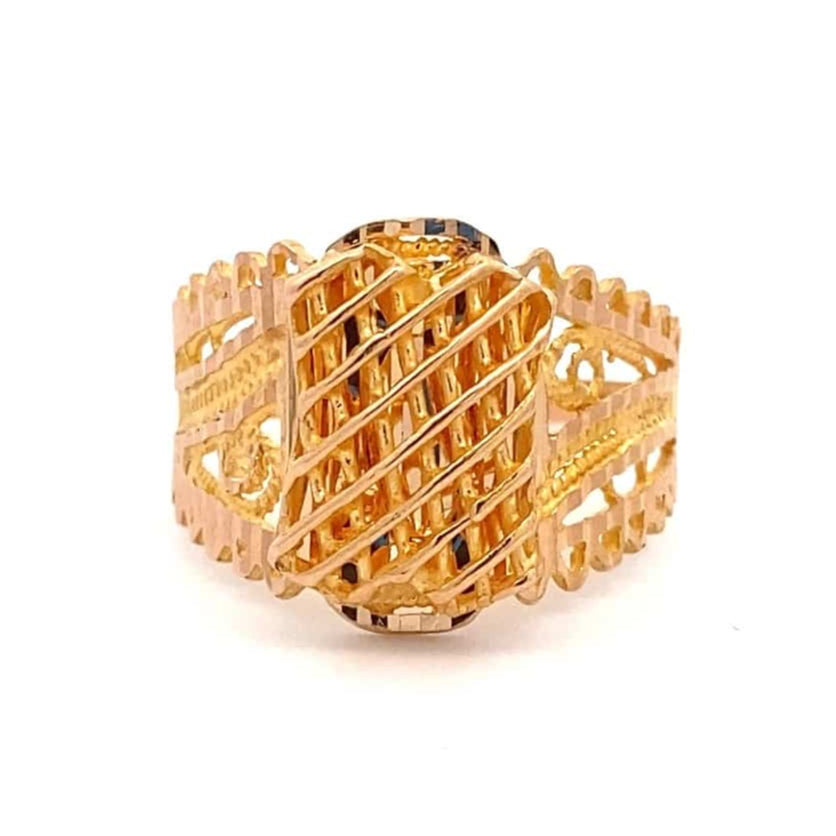
22 Karat Gold Basket Weave Ring
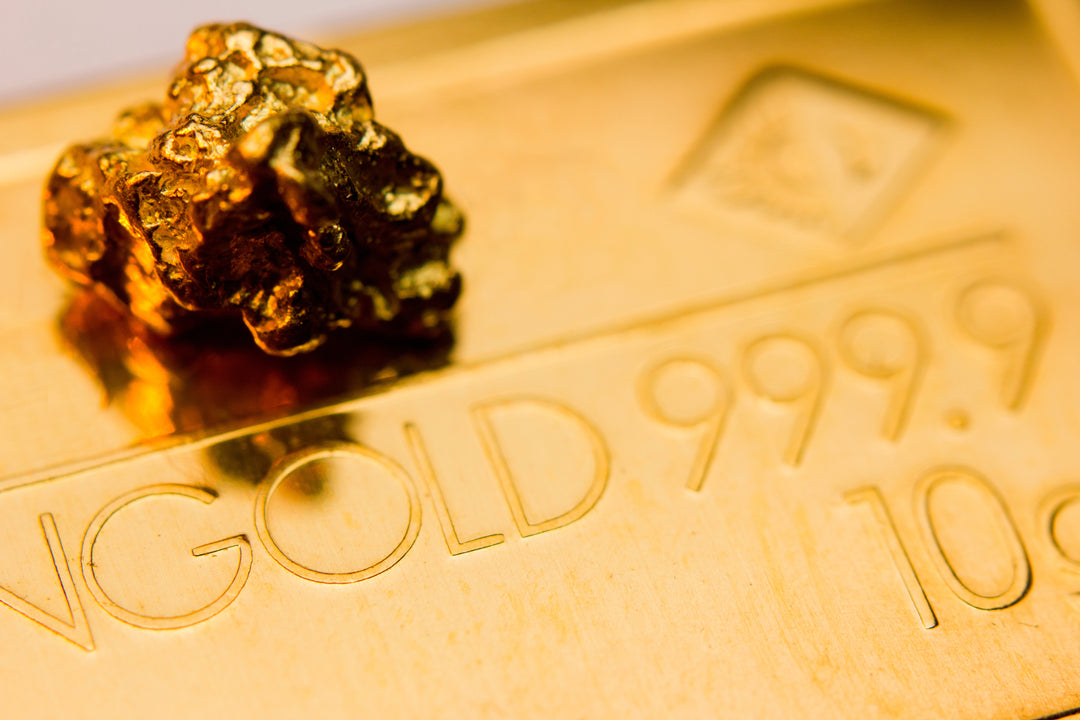
What Does 999 Mean on Jewelry?
The stamp “999” means the piece contains 99.9% gold and only a trace of other metals. This is also called 24-karat gold and may appear as “24K.” You will not find white or rose gold at this purity. Jewelers rarely use 24K gold because it is very soft and bends easily.
Platinum Purity Stamps
Jewelers often mix platinum with ruthenium, iridium, or cobalt. Each blend has different benefits, and jewelers choose them for certain designs. Platinum is strong, bright, and hypoallergenic.
What does 850 mean on jewelry?
The stamp “850” means the piece contains 85% platinum and 15% other metals. This mix is common in Japan, where many jewelers prefer 850 platinum because it is slightly harder and holds small stones well.
What does 900 mean on jewelry?
The stamp “900” means the piece contains 90% platinum and 10% other metals. Jewelers often used 900 platinum in antique pieces from the early 1900s, especially in Art Deco rings and brooches.
What does 950 mean on jewelry?
The stamp “950” means the piece contains 95% platinum and 5% other metals. This is the most common standard in the U.S. and Europe today. It combines strength with a bright white shine that makes diamonds look larger and more brilliant.
What does 999 mean on jewelry?
The stamp “999” means the piece contains 99.9% platinum and only a trace of other metals. This purity is rare in jewelry because platinum is already very durable at 950. When it is used, you’ll mostly see it in collector’s coins or very fine custom pieces.
Other Types of Stamps You May See
Not every stamp on jewelry relates to metal purity. Jewelers and countries also use other kinds of stamps to show important details about where or how a piece was made.
Maker’s Marks
A maker’s mark is a stamp that shows who made the jewelry. Each jeweler or company has their own unique mark. For example, Tiffany & Co. often stamps “Tiffany & Co.” inside their rings and bracelets. You can find directories of maker’s marks online if you want to trace the history of a piece. This online maker’s mark directory from Lang Antiques is a helpful identification resource: Makers Marks – Antique Jewelry University.
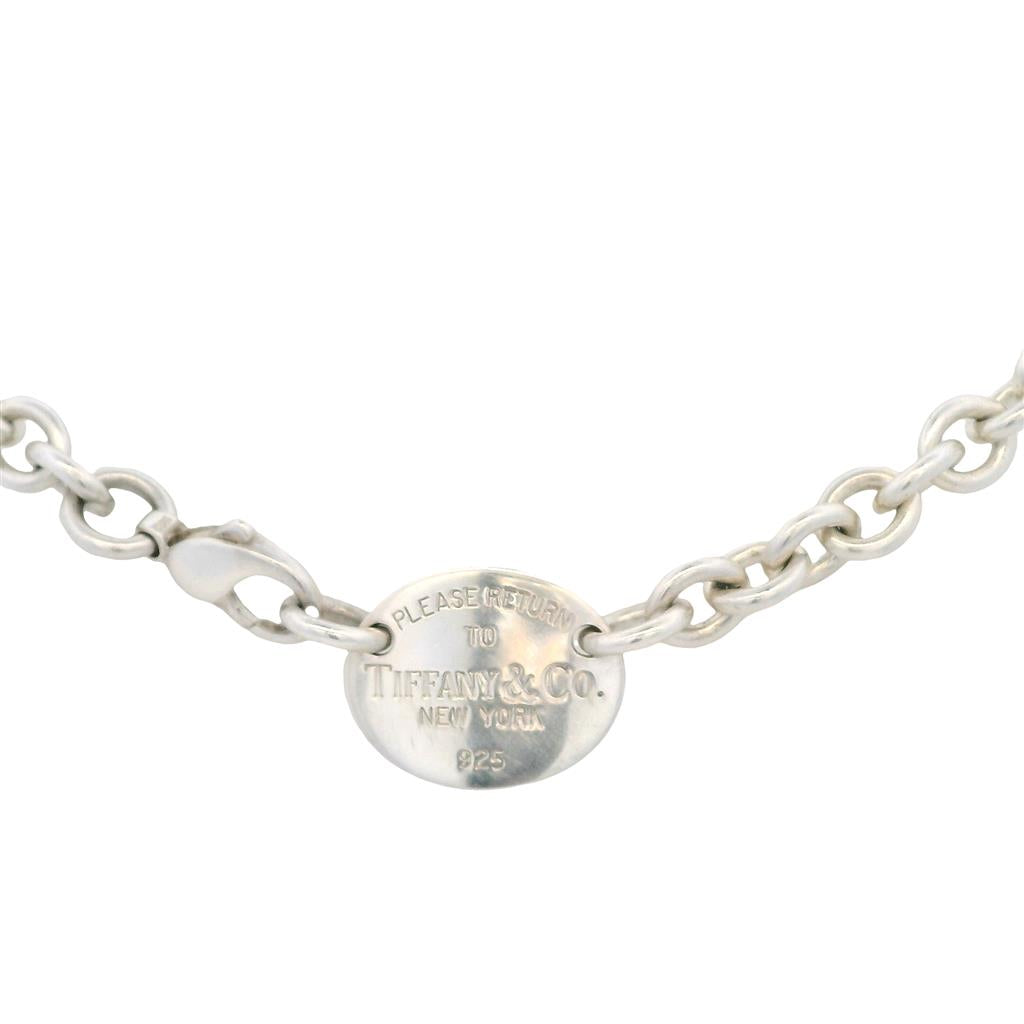
Sterling Silver Tiffany & Co. Necklace
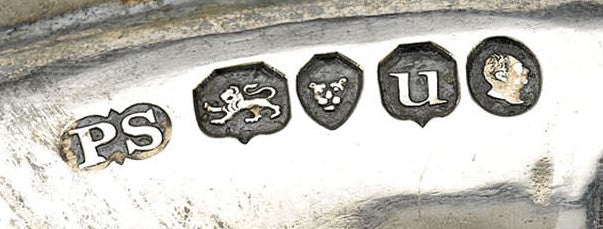
Rauantiques, CC BY-SA 4.0, via Wikimedia Commons
Assay Office Stamps
Some countries require jewelry to be tested and stamped at an official assay office. Assay offices are institutions established specifically for testing precious metals. These stamps confirm the metal purity and may include symbols for the city or office that performed the testing. For example, jewelry assayed in London often carries a leopard’s head symbol. If you have a piece with assay stamps, this hallmark finder from Antique Jewelers may be a helpful resource: Hallmark Finder | Instantly Identify Your Marks
Country or Import Stamps
Many countries also use national symbols or codes to show where jewelry was made or imported. For instance, French jewelry often has an eagle’s head mark to show 18-karat gold. These marks can help identify the age and origin of older or antique pieces. You can find examples at the Hallmark Research Institute: Hallmark Research Institute
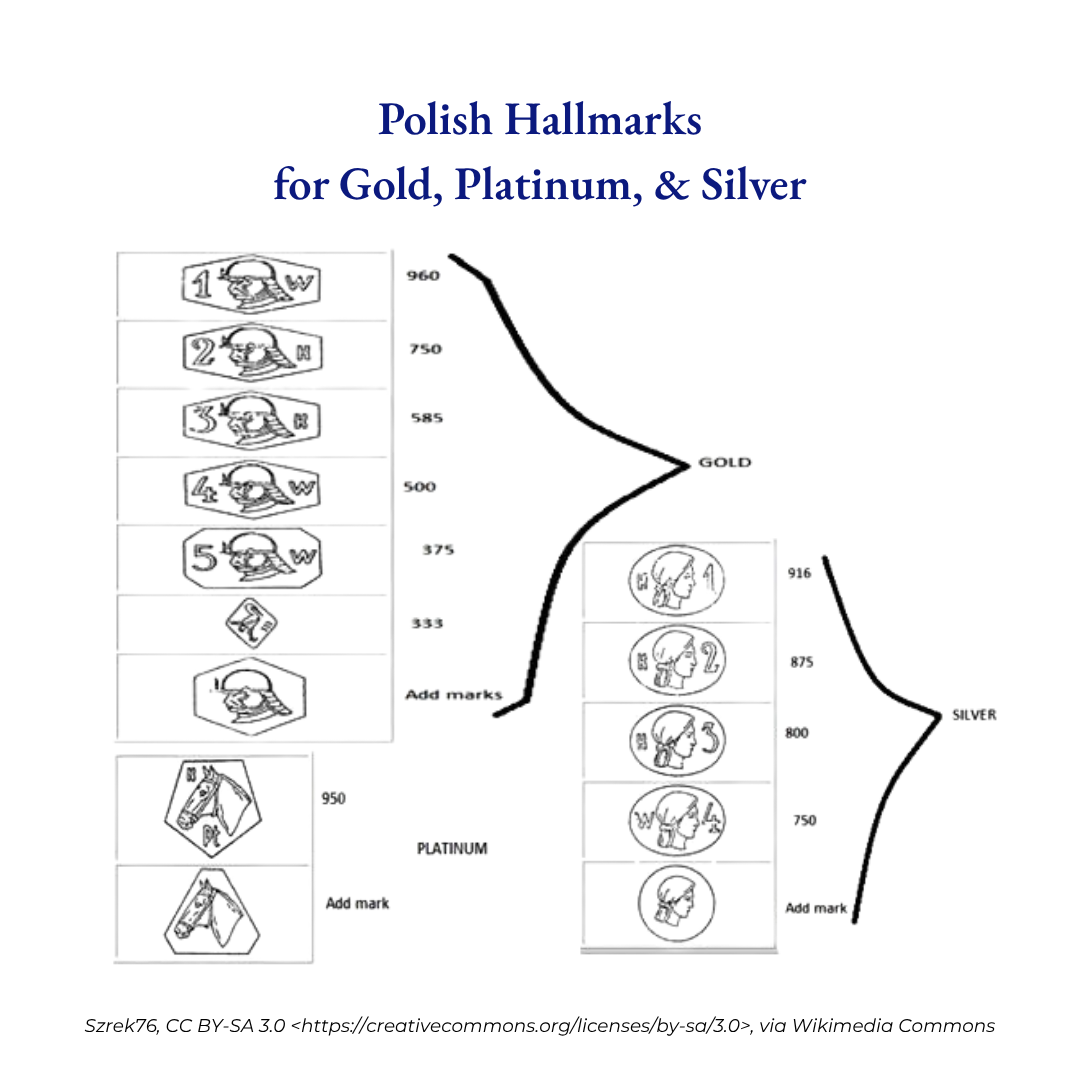
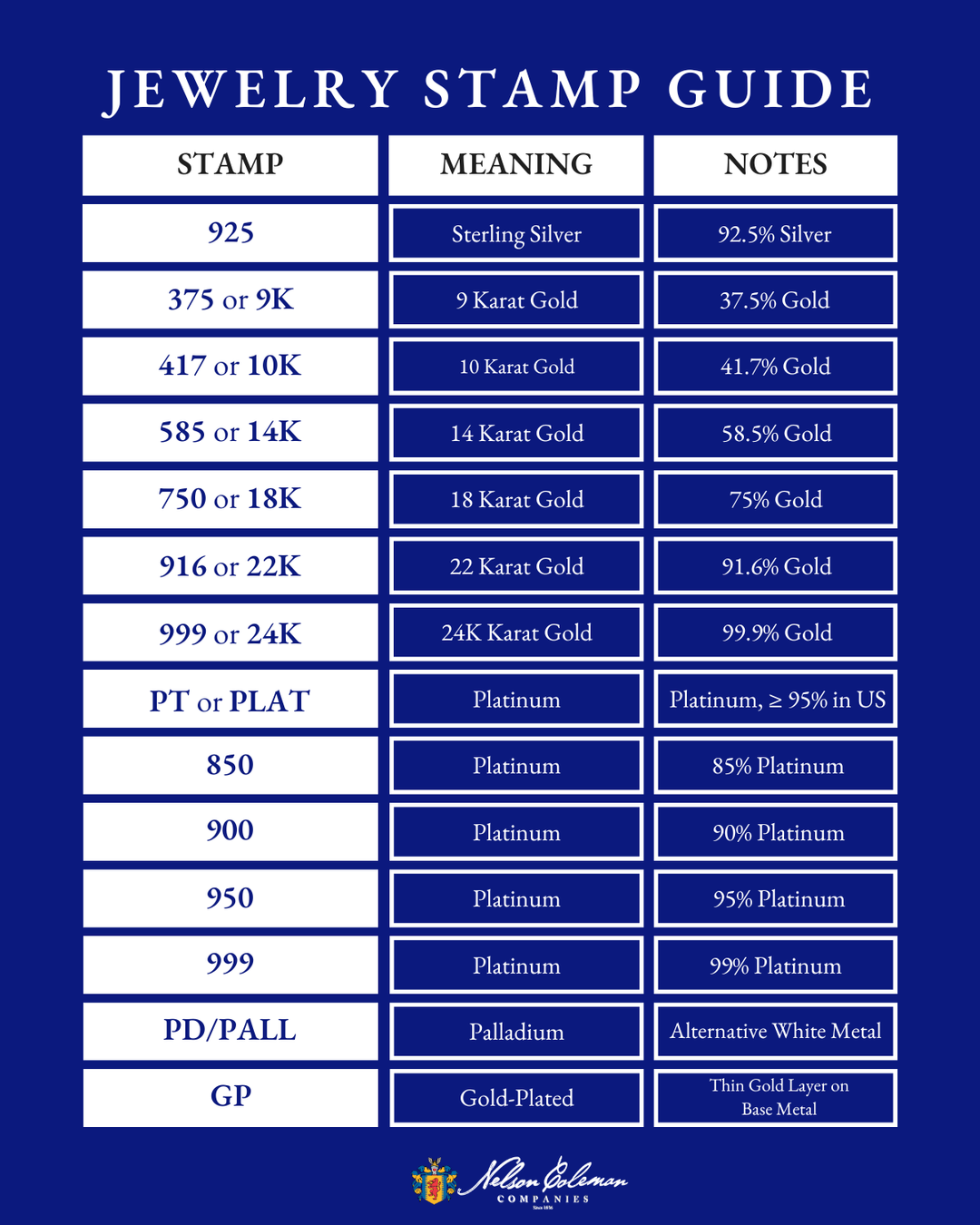
Every Number Tells a Story
The numbers and stamps on jewelry may seem small, but they carry a lot of meaning. They tell you about the purity of the metal, where the piece came from, or even who made it. Learning to read these marks can help you understand your jewelry better and appreciate the history behind it.
Interested to learn more about the marks on your jewelry? Schedule an appointment at any one of our locations.


